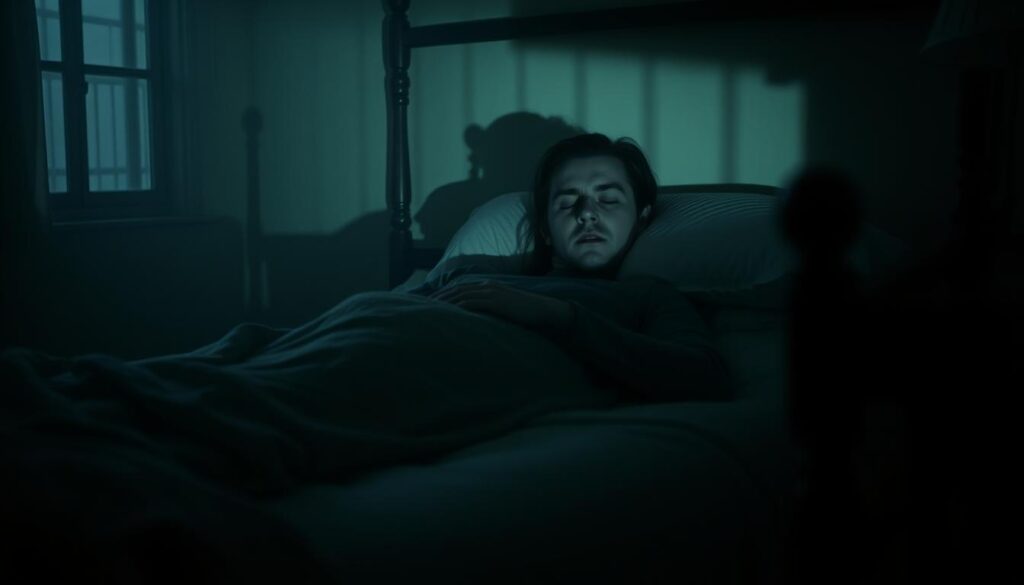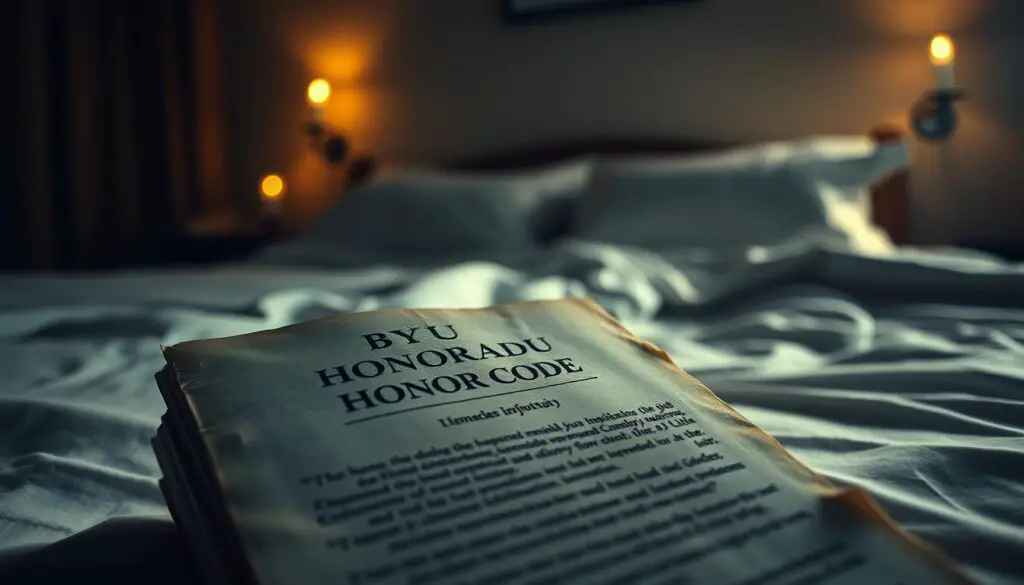Have you ever stumbled across an internet rumor so strange it made you pause? Over the past few years, a peculiar concept called “bed shaking” has sparked viral debates. While some dismiss it as an urban legend, others claim it’s rooted in real cultural practices tied to religious guidelines.
The term “soaking” often appears alongside these discussions. It’s described as a workaround for strict moral codes, blending humor and controversy. Social media platforms have amplified the idea, turning it into a modern cultural curiosity. But how much of this is myth versus reality?
This article digs into historical context, firsthand stories, and the role of platforms like TikTok in spreading the trend. We’ll also touch on institutions like Brigham Young University (BYU), where honor codes shape daily life for many students.
Though the topic might seem lighthearted at first glance, it opens a window into larger conversations about tradition, adaptation, and youth culture. By blending research with personal accounts, we aim to separate fact from fiction—without judgment.
Key Takeaways
- The “bed shaking” trend gained attention through viral social media posts and online debates.
- “Soaking” refers to a controversial practice often linked to avoiding strict religious guidelines.
- BYU’s Honor Code plays a role in shaping behaviors discussed in these rumors.
- Cultural implications extend beyond humor, revealing tensions between tradition and modernity.
- Firsthand accounts and historical context provide clarity on exaggerated claims.
- Social media algorithms amplify niche topics, turning them into widespread discussions.
Historical and Cultural Context of Mormon Bed Shaking
Cultural practices often spark curiosity when they intersect with modern myths. Among Latter-day Saints communities, strict chastity rules have long shaped discussions about intimacy. This backdrop created fertile ground for rumors about alternative approaches to physical relationships.
Early Rumors and Anecdotes in Mormon Culture
Stories about soaking—a term describing non-penetrative sex—began circulating decades ago. Former members often recalled hearing whispers of couples using this loophole to technically obey church teachings. One ex-member shared: “We joked about ‘soaking’ as teens, but nobody admitted doing it.”
Terms like jump humping (involving a third person) and “docking” emerged alongside these tales. Though rarely confirmed, they spread through college campuses like Brigham Young University. Students would debate whether such acts violated the Honor Code’s strict marriage-focused guidelines.
Evolution of Alternative Practices and “Soaking” Myths
Online forums in the early 2000s amplified these concepts. A 2003 thread described “friends helping friends stay chaste through creative methods.” This table shows how terminology evolved:
| Term | Description | Cultural Context |
|---|---|---|
| Soaking | Non-penetrative intimacy | Avoids technical violation |
| Jump Humping | Third-party assistance | Satirical exaggeration |
| Docking | Non-sexual physical contact | Boundary testing |
Long-standing members often dismiss these stories as outsider fiction. Yet the persistence of these myths reveals a cultural tension between tradition and youthful reinterpretation.
The Reality Behind mormon bed shaking Practices
The line between urban legend and reality often blurs in online communities. While viral posts paint vivid pictures of soaking as a widespread loophole, firsthand accounts reveal a more nuanced story.

Debunking Myths Versus Actual Personal Accounts
Reddit threads overflow with anonymous claims about sex-adjacent practices. One user wrote: “My roommate swore they knew a couple who ‘soaked’ weekly.” Yet verified stories remain scarce. Ex-members often describe these terms as inside jokes rather than actual movements.
Experts like Dr. Jana Riess, a scholar of LDS culture, state: “The church’s emphasis on chastity leaves no room for technical loopholes. These myths likely stem from youthful experimentation, not doctrine.”
Expert Perspectives and Church Doctrinal Insights
The LDS Church’s official stance remains clear: any practice arousing lust violates sacred covenants. Leaders emphasize that marriage is the only proper context for physical intimacy. As Elder David A. Bednar taught: “The Lord requires complete moral cleanliness.”
While terms like jump humping circulate as humorous exaggerations, they’re rarely tied to real behavior. Most students at church-affiliated schools prioritize adherence to spiritual guidelines over finding creative workarounds.
Social Media Impact and Viral Trends
What happens when an inside joke escapes its bubble? TikTok’s algorithm turned niche terminology into a global conversation overnight. A mix of curiosity and shock propelled terms like soaking and jump humping beyond religious communities, creating a wildfire of memes and debates.
TikTok and Viral Moments: How the Trend Exploded
In late 2022, a video by @funeralpotatoslut broke the internet. The caption joked: “When your roomie helps with jump humping so you stay Honor Code compliant 😇.” Comments flooded with questions like, “Is this real?!” and “Brigham Young students are built different.”
Hashtags like #SoakingChallenge and #JumpHumping racked millions of views. Creators from Salt Lake City to Paris mimicked the trend, blending satire with genuine confusion. One viral stitch argued: “If it’s not penetrative, is it even sex?”
Public Reaction and Perspectives from Ex-Mormons
Ex-members responded with dark humor. A TikTok user shared: “We joked about soaking at church camp, but seeing it go global? Wild.” Others criticized the trend for oversimplifying Latter-day Saints values. Critics called it “a mockery of actual struggles with chastity.”
| Group | Reaction | Platform |
|---|---|---|
| Ex-Mormons | Mixed humor & frustration | Twitter threads |
| Teens | Memes & challenges | TikTok duets |
| Scholars | Debated definitions of sex | Academic blogs |
The viral content also sparked serious discussions. Some argued that labeling soaking as a loophole undermines the church’s emphasis on intentional living. As one Reddit user noted: “It’s not about technicalities—it’s about your heart’s commitment.”
Implications on Mormon Sexuality and Honor Code
How do young adults balance faith with modern realities? Strict codes governing physical relationships create unique challenges. At church-affiliated schools like Brigham Young University, students navigate honor code expectations while exploring personal boundaries.

Faith Meets Creative Interpretation
The concept of soaking—seen by some as a technical workaround—highlights tensions between doctrine and youthful experimentation. One BYU sophomore shared anonymously: “You feel pressure to stay ‘pure’ but also want connection. Some see loopholes as harmless solutions.”
Church teachings emphasize chastity as essential for spiritual growth. Yet whispers of humping-adjacent practices persist in dorm discussions. These stories often reflect anxiety about rules rather than widespread behavior.
When Rules Shape Identity
BYU’s Honor Code explicitly ties enrollment to moral conduct. This creates high stakes for students navigating relationships. A 2022 campus survey found:
- 68% felt intense pressure to avoid even perceived rule-breaking
- 42% knew someone who discussed soaking as a theoretical option
- 91% ultimately prioritized adherence to church standards
Critics argue such strictness fosters shame, while supporters believe it strengthens community values. As Elder Ronald A. Rasband taught: “True discipleship means aligning actions and intentions with Christ’s teachings.”
The digital age adds complexity. Online jokes about jump humping reach campus groups, blending humor with genuine curiosity. Yet most students dismiss these concepts, focusing instead on building marriages aligned with their faith.
Conclusion
Like a cup of coffee brewed too strong, this topic mixes discomfort with curiosity. The viral discussions around alternative intimacy practices reveal more about cultural negotiation than technical loopholes. From dorm-room jokes to TikTok debates, the concept reflects how people navigate faith in evolving social landscapes.
Historical whispers and modern memes share a common thread: the tension between tradition and personal expression. While terms like jump humping gained traction as satire, they spotlight real struggles with chastity expectations. As one Brigham Young University alum noted: “It’s not about breaking rules—it’s about understanding why they exist.”
Experts and church leaders agree—intent matters more than technicalities. The Latter-day Saints community continues balancing sacred covenants with human connection. Though sensationalized online, these conversations underscore a universal truth: cultural identity thrives through dialogue, not dogma.
Next time you sip your coffee, consider how even quirky topics can spark meaningful reflection. What’s your take on tradition meeting modernity? Share your thoughts below—we’re all here to learn.
FAQ
Where did the idea of "bed shaking" in Latter-day Saints culture originate?
The concept stems from decades-old rumors and anecdotes about couples avoiding traditional intimacy. These stories often reflect cultural speculation rather than official teachings from the LDS Church. Over time, terms like “soaking” or “jump humping” emerged as urban legends.
Is "soaking" an approved or common practice among Latter-day Saints?
No. The LDS Church emphasizes chastity and fidelity within marriage, and practices like soaking are not endorsed. Such ideas often circulate as myths or jokes, particularly among younger members discussing loopholes in chastity rules.
How did social media platforms like TikTok amplify these myths?
Viral videos and memes exaggerated the concept as a “loophole” to LDS teachings on intimacy. While many posts were satire, they sparked debates about chastity, honor codes at Brigham Young University, and how modern culture interprets religious guidelines.
How does the LDS Church address topics like chastity and intimacy?
Official doctrines focus on abstinence before marriage and fidelity afterward. Leaders encourage open dialogue through approved resources, such as For the Strength of Youth, while discouraging attempts to exploit “technicalities” in moral standards.
What impact have these rumors had on young Latter-day Saints?
While most members recognize the myths as humor, some students at Brigham Young University report increased scrutiny of relationships under the honor code. The viral trends have also sparked broader conversations about balancing faith with modern social norms.